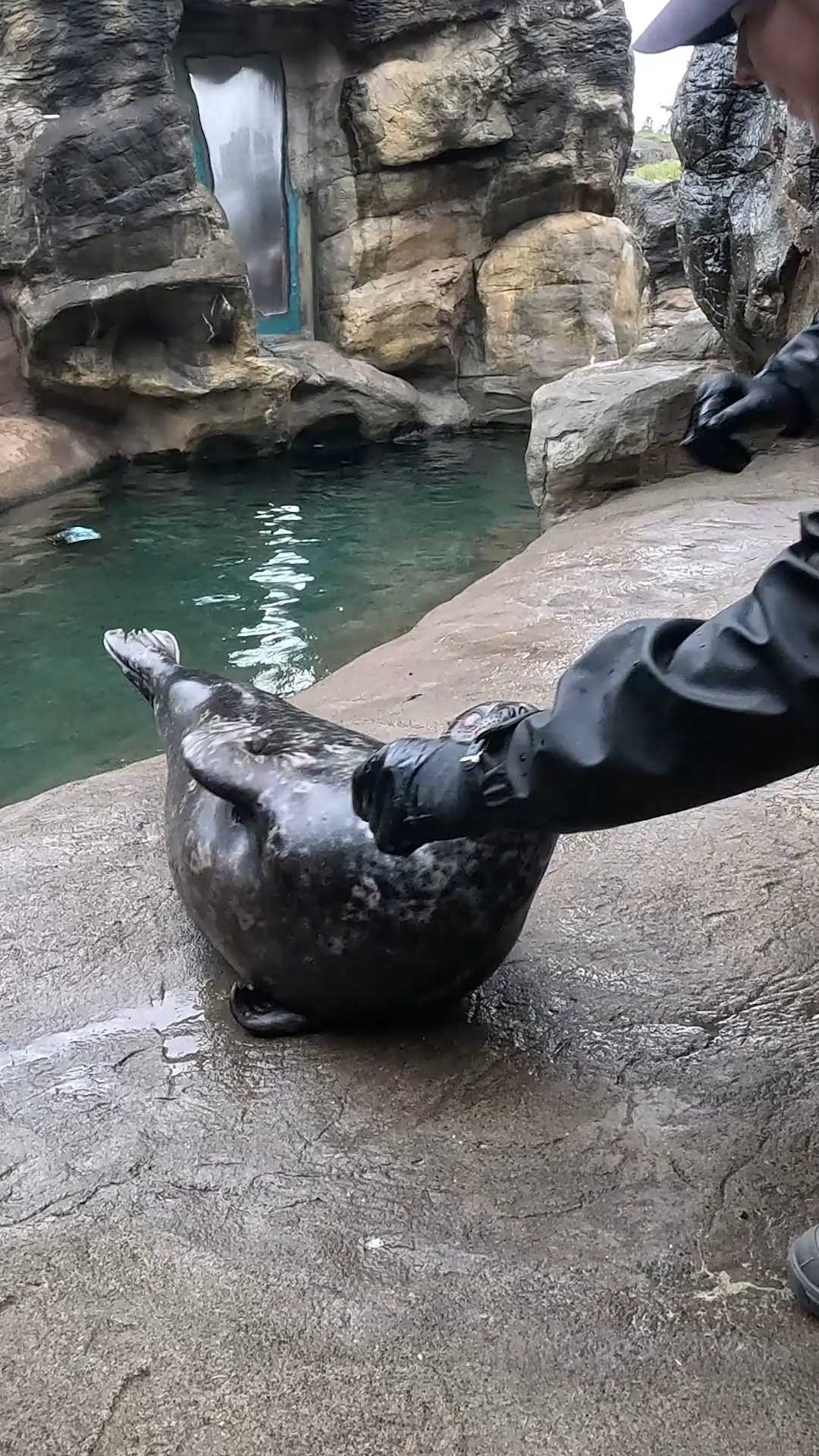- Introduction to Tazzy and her unique adaptations as a blind pinniped.
- The role and importance of verbal and touch-based communication in animal care and training.
- Insights into the specialized health check procedures for marine mammals.
- The importance of collaboration among zoologists and veterinarians in wildlife conservation.
- Broader implications for zoo management and animal welfare practices in conservation.
Tazzy is a captivating exemplar of how animals can adapt to disabilities, highlighting the resourcefulness of nature and human ingenuity in stewardship. Tazzy, a blind pinniped, resides under the watchful care of zoologists and veterinarians. Her blindness necessitates special training methods to maintain her health and well-being, serving as a testament to the resilience and adaptability within animal care domains.
Verbal and touch-based communication is crucial in Tazzy’s case. Since she cannot rely on vision, her caretakers employ a combination of sounds and tactile cues. Training Tazzy involves a deep understanding of animal behavior science, emphasizing the need for patience and precision. In asking Tazzy to roll over for an ultrasound examination by Dr. Anna, Mammalogist Megan demonstrates a blend of technical skill and compassion. This training underscores the vital relationship between animal handlers and their charges, showcasing a commitment to Tazzy’s welfare.
The process of training Tazzy involves systematic desensitization and positive reinforcement, strategies rooted in behavioral psychology. This method is vital when training animals like Tazzy who face additional challenges due to disabilities. By associating specific verbal commands with touch prompts, Tazzy’s caregivers help her navigate her environment and participate in her healthcare routine actively. These methods not only ensure her participation but also foster trust and cooperation, crucial elements in animal management.
Performing an ultrasound on a marine mammal like Tazzy is a complex procedure that requires precision and expertise. The examination sheds light on the detailed processes involved in monitoring an animal’s health. Dr. Anna must delicately maneuver the ultrasound device while interpreting the images to assess Tazzy’s health accurately. Given the unique challenges associated with handling larger marine mammals, these examinations are critical. The information obtained informs the team about Tazzy’s internal health, ensuring any potential issues are identified early and accurately.
This complex yet rewarding task emphasizes the synergy between the science of veterinary medicine and zoology. Collaborative efforts between veterinarians and zoologists are paramount to the success of health assessments and ongoing care. These professionals bring diverse expertise, working in concert to uphold high standards of care for animals like Tazzy. This multidisciplinary approach embodies the underlying principles of wildlife conservation and veterinary science, ensuring that the needs of unique animals are met holistically.
Looking beyond Tazzy, her care and training represent the broad principles of zoo management and animal welfare. Facilities committed to conservation must consider varied needs and potential challenges in animals under their care. These institutions must adopt comprehensive strategies that accommodate both the typical and atypical necessities of all creatures. This holistic vision reaffirms the need for educational and methodological initiatives, continually aligning zoo management practices with the latest animal welfare research to improve living conditions and care protocols.
In examining Tazzy’s story, we glean important lessons on adaptability, empathy, and collaboration within the fields of zoology and wildlife conservation. These insights have far-reaching implications for managing and caring for animals in controlled environments, advocating for enhanced zoo management and conservation efforts that extend across the globe. Her narrative urges us to continue our quest for knowledge and innovation in the care of all creatures, remarkable and otherwise. Tazzy is a testament to the success and importance of collaborative animal stewardship, underscoring the manifold possibilities when humans and wildlife coalesce in understanding and care.
*****
Source Description
Good work, Tazzy!
Since Tazzy is blind her caretakers use verbal and touch-based cues while working with her. In this video, Mammalogist Megan asks Tazzy to roll over so Dr. Anna can perform an ultrasound, checking to make sure this pinniped is in pinni-perfect condition.


